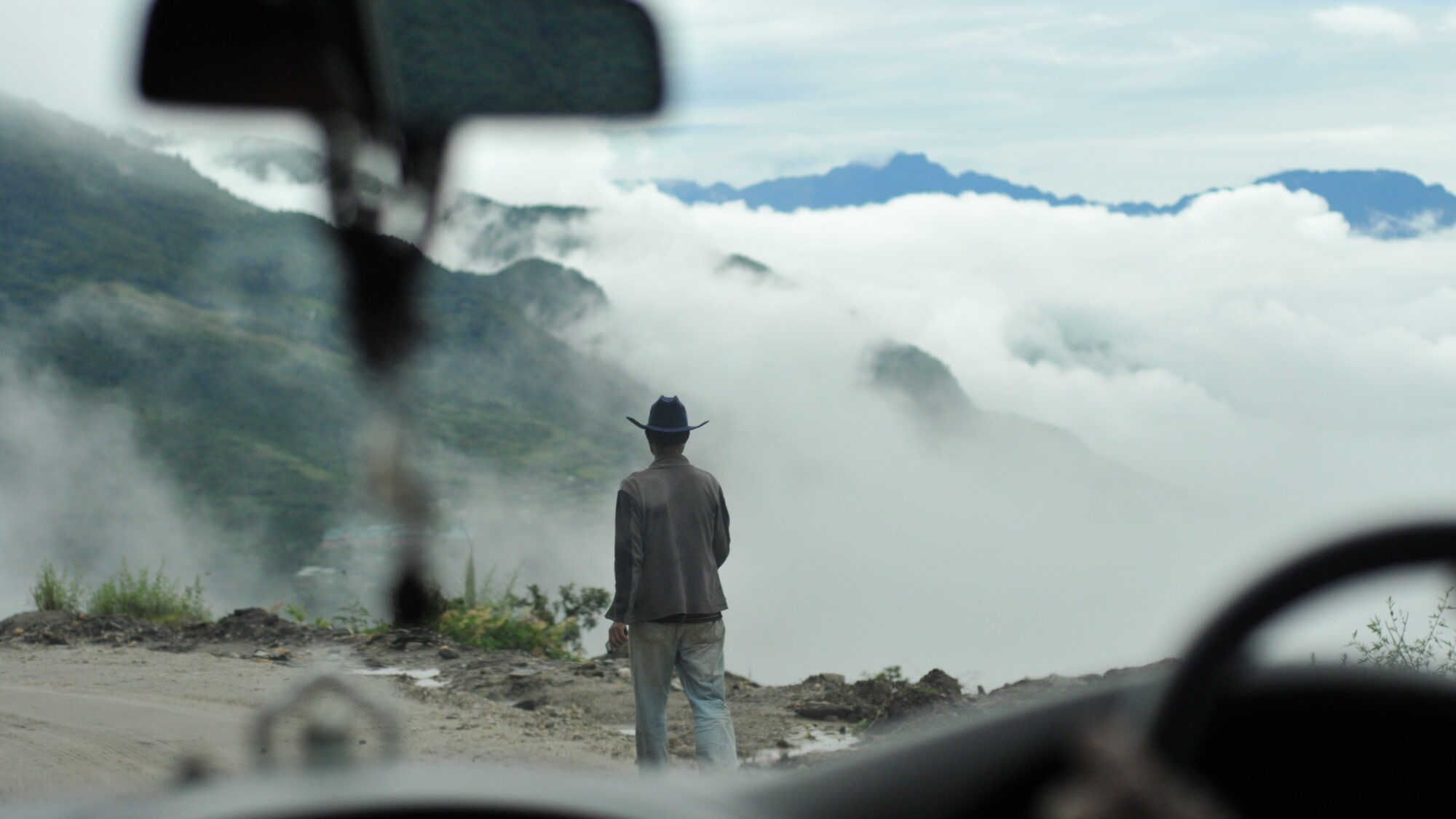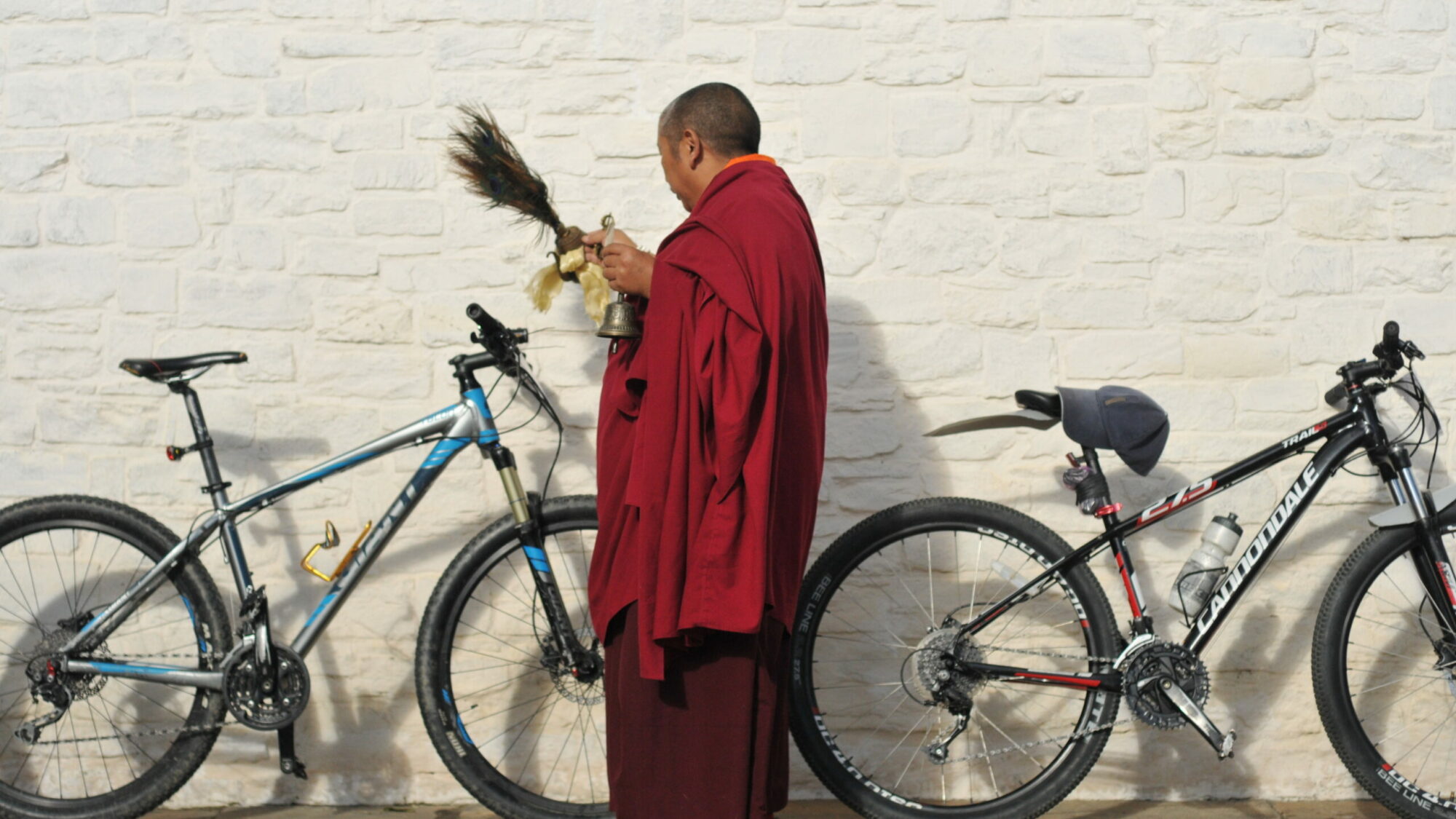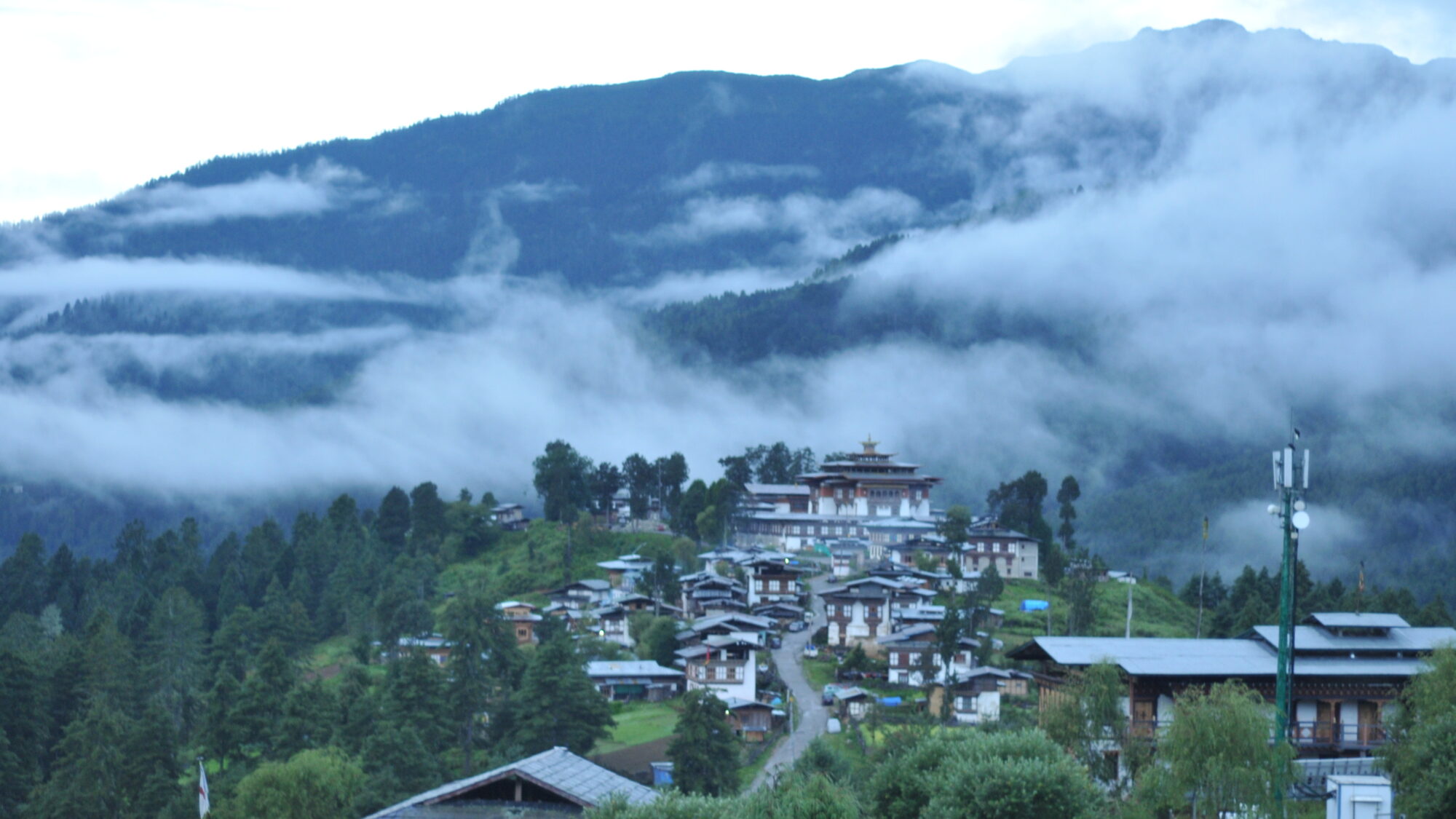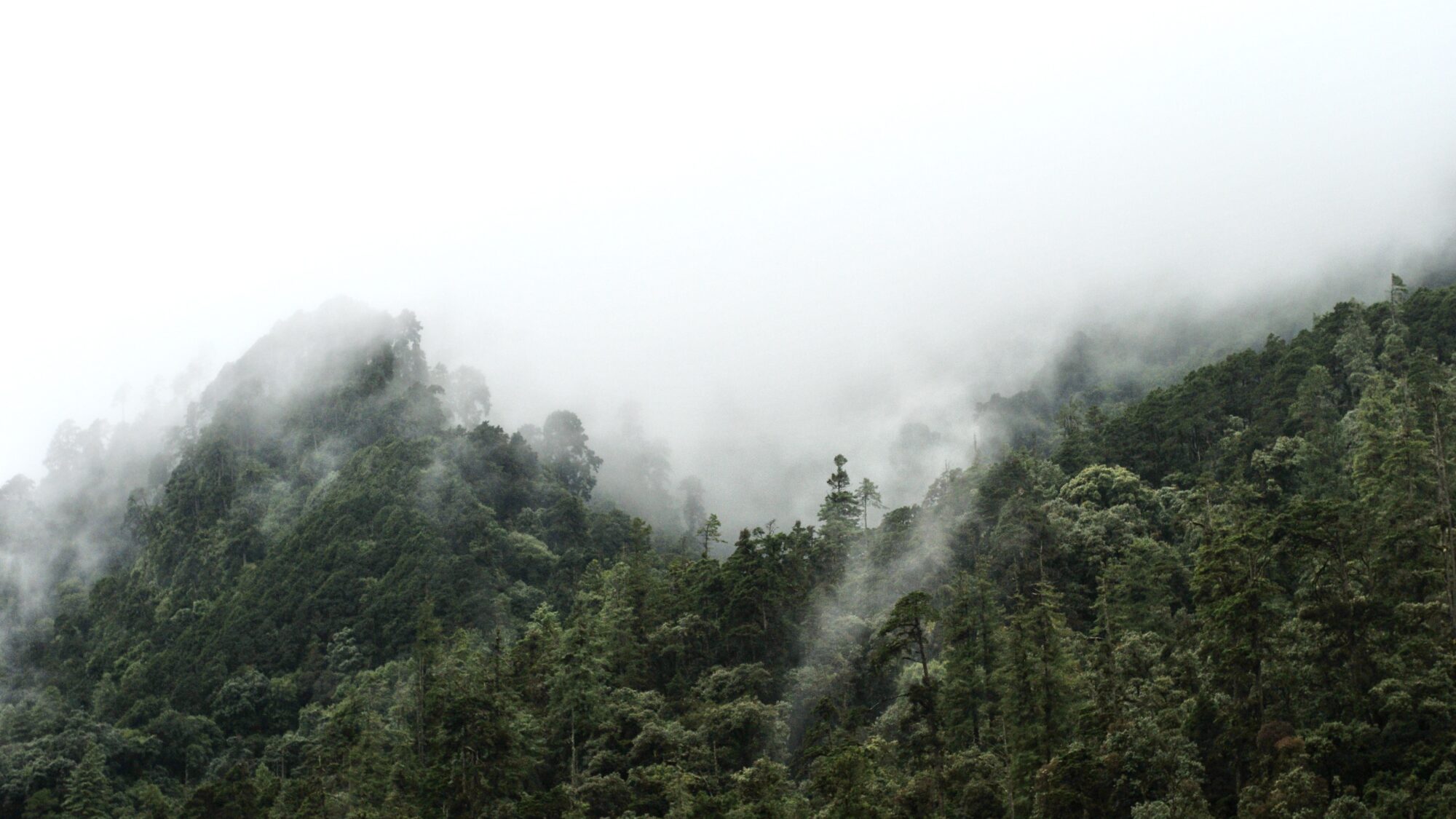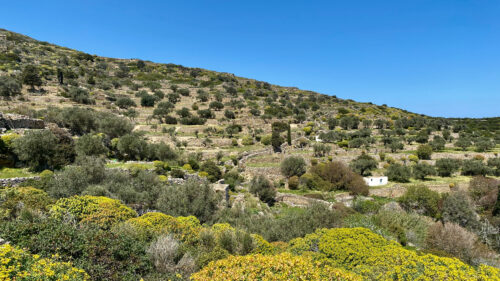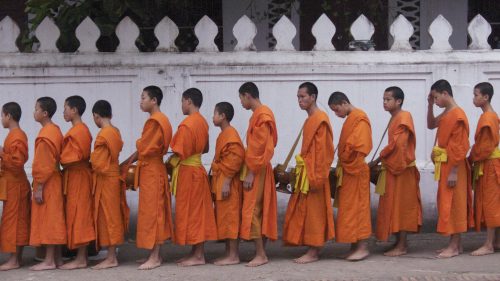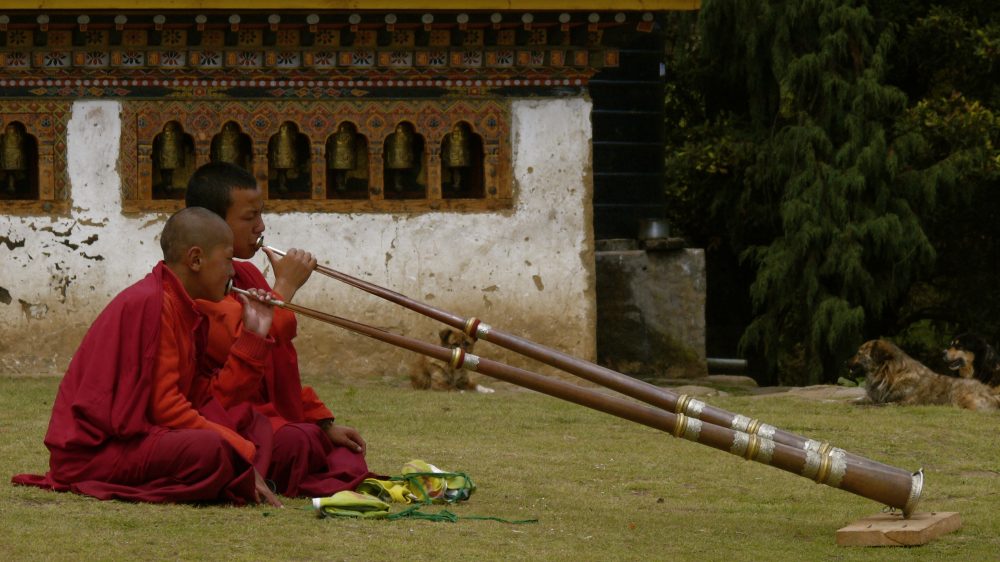the end of Tibet
We had finished dinner and the rain was setting in when I decided to put on my biking kit and head up the mountain pass. The valley I was in, the Phobjikha Valley, at 10,000 feet, is a sanctuary for the Black neck crane, a medium-sized crane in Asia that breeds on the Tibetan Plateau but nests in this particular valley on the south side of the mountain chain in the Kingdom of Bhutan. Bhutan’s name is thought to be from the sanskrit word Bhotant, “the end of Tibet”. I was staying with friends at a place called the Gangtey Lodge, a hotel owned by a couple I had met years ago in Myanmar/Burma when I lived and worked as a guide there. I had entered in a bike race that I should not have been in, I had not trained and was ill equipped but what I lacked in skill and technique I compensated for in gusto and good cheer. The race was to be in two days so I figured I should get a ride in with altitude in the cover of darkness as the race was to start at 2 am and I wanted to know what I was in for.
I started off slow and steady but it was a slog. My lights were flickering as the charging mechanism for my front head light must have been faulty, something I would find out more realistically in two days at 2:05 am after the start race shots fired, but on this evening I thought it was a fluke and kept riding with a headlamp leading me along the potholed road. As the altitude climbs in these landscapes, the tree cover shrinks until you are left with a short tropical bamboo called Patsha, roughly knee high. As I biked slowly around a switchback, for the roads up the valley walls were only short switchbacks at this point, something large and toothy bolted out from the Patsha and stopped me in the road. It was a boar, a wild boar, an animal I knew from childhood as being something to be careful with as the teeth can cause some serious damage. But I also was a chef, and the taste of pork is something I enjoy, so the multiple thoughts crossed my mind of fear and of hunger.
I kept riding and reached the pass where a chorden was built, a shrine in the middle of the road. In Bhutan you can find shrines at passes and summits indicating a closeness to the heavens, and one is to yell “Lha-geh lo, Lha-geh lo, Lha-geh lo” meaning “May the gods be victorious“ so I yelled and took a photo in the rain and night and was happy to turn around to head back to the Gangtey Lodge for a good rest and a dry bed.
This valley holds magic, and I write that without irony or surrealism – magic is very much thought of as real in Bhutan. In this valley there is a room in a monastery where there is said to be the preserved remains of a yeti, bigfoot, a hairy manlike creature that roams the mountains. It is also a place where large human-scale birds fly over the Himalayas in an annual commute to nest, the blackneck Crane. They fly from the Tibetan plateau and go over Everest, Annapurna, the large peaks that roof our planet, up and over and come down to this valley as it is a haven and auspicious. There is no need for surrealism here, reality is surreal enough.
In the morning I asked the chef at the lodge about wild boar, and he told me it was forbidden to eat as it was a buddhist country, which made sense, but the idea of a slow cooked swine lurked in my mind.
The race is called the Tour of the Dragon and it is billed as the toughest one day mountain bike race in the world, an attrition race of 167 miles over 15,000 feet of climbing over four himalayan passes. The hardest stages of the 2019 Tour de France covered 13,500 feet of climbing in a day, and that was with ultralight race bikes on paved roads; this is potholed construction on the sides of the worlds largest mountains.
I wasn’t the only universal amateur there; my friend Alex Bescoby came as well and was just as ill prepared. Alex was writing an article for the BBC on the race and came after he and I had a conversation in my back garden a few months prior (after a few drinks). He was in between projects having just finished a film on the lost royals of Burma and soon to start an overland journey from Singapore to London returning a famed Land Rover 86” station wagon that had been left in SE Asia in the 1950’s. Alex wasn’t a cyclist, but he was curious and keen, as was I, for an interesting excuse for a wee day out on the bike.
The organized race originally started over 12 years ago, and was a mixture of a biking fervour taken on by the then king, Jigme Singye Wangchuck, Bhutan’s fourth Druk Gyalpo, or Dragon King. In 2008 I had seen, first hand, some of the wonders this King was able to achieve; Gross National Happiness as a driving force, a peaceful transference of power in an abdication to his son followed by a transition into a parliamentary governing system out of a total monarchy, something rarely seen in history. In 2008 I was guiding hiking trips in Bhutan and was there for the first election. There were practice runs on how to vote, it was a reluctant population as they loved their King, but he argued that one day there would be a bad King, and it is no way to invest in a country by leaving it up to chance. The frictions of this time period perfectly summed up in the film “The Monk and the Gun” that recently came out. (Bhutan has a small, but wonderful and talented film industry worth diving into – see the list of greatest hits at the bottom).
The fourth King was also a cycling enthusiast. Stories would surface of people passing the rolling monarch in the hills up near Phobjikha on weekend rides. This trend gave rise to a national love of the sport. The King’s son, His Royal Highness Prince Jigyel Ugyen Wangchuck, inherited his father’s fanaticism, and in the late 2000’s decided to bike with some friends from Bumthang to Thimphu, and thus a tour was born. Since then it has turned into a national holiday, and not one of those off holidays that barely get mentioned. On the flight in on Druk Air, the tour of the dragon is listed with the top holidays for this part of the world.
The next day I drove to Bumthang to get registered for the race and to attend a BBQ hosted the night before by the Royal family and the Olympic committee who help put the race on. It is about a 4 hour drive from Phobjikha to Bumthang along windy roads that, as cliche as it sounds, look like Tolkien story boards. There is Trongsa, a city hanging on a cliffs edge in what was the family seat of the Wangchuck Dynasty. The name translates to “new village” and was buit in 1543, a sense of slow time in this magical kingdom. There is a large dark forest to the south of Trongsa, brooding across a ravine, true wilderness and virgin, uncut forrest. It was thick. I asked my friend Tandin what it was and he told me a story of an evil demoness, the Nyala Duem, who dwelt there and tricked travelers into giving away their souls. He said that even today, if a farmer has a yak that wanders across the river into the Nyala Duem Forrest, the farmer will not pursue it and assumes the yak is gone for good. The power of belief and landscape. I yelled “Lha-geh lo” and marked that wood as a place to remember.
That evening I arrived in Bumthang and headed to the reception for racers at the Royal family estate. Speeches were made and information was given along with inspirational stories from riders of years past. And then a feast, a feast of red rice and vegetables from the valley, Ema Datshi (chili and cheese), and a large and slow roasted wild Boar.
In Buddhism, in particular the Buddhism in this part of the Himalaya, there is a user friendliness in the function of the religious form. Prayers are written on flags that once planted in the ground and activated by the wind send the prayer as efficiently to the gods as if one was saying it themselves out loud. Streams are used to harness prayer wheels to perpetually spin as the water rushes past. Meat is served in the country, brought in frozen from India with the idea being it would be morally inept to waste the meat, one must use what is already slaughtered. So I had seen precedent for religious work-arounds. I asked the chef dolling out servings to the cyclists where the boar came from and how it was allowed, and with a nudge and a wink he said there were special blessings and offerings made that allowed it for this feast, after all, we needed the strength for the race to come.
The next day was spent prepping, cleaning bikes, going on a slow and easy ride up a pass to keep the legs well ready, and mentally preparing for a 2 am start time in the village centre. I knew I was not a contender, I was there as a mobile spectator really, I was riding in the race but just to see it from the wheels. I had no business being there. This was a relief and perhaps it was a certain level of ignorance, but I was comfortable and relaxed this day before. I was comfortable as I was part of the Aman Hotel chain team, the Kora-Tigers, a team set up by the then General Manager of the Aman resorts in Bhutan, John Reed, another cycling enthusiast and eccentric American from New Orleans. A southerner like myself, out and about in the wide world. I had met John in 2008 when I first came to Bhutan, and had kept in touch. He had a team in the first year of the Tour of the Dragon, and had talked it up each time I had seen him since. He was part of the reason I was there. John had been through this before and was like an elder brother to us all on the team. Nerves were high with some, jitters, butterflies in the stomach, staggered conversations that happen when a groups collective mind is half occupied with the unknown. We all went to bed early knowing we were to wake up at midnight, to carb load, and then to make our way by bike to the village center.
I don’t know why, perhaps it was fear and anticipation, but I had to use the bathroom so many times before the race began. It was 2am, raining, there were speakers blaring music and announcements, and no bathrooms I could find so I found a small alley and returned there again and again. The energy level was building and the clock was ticking, and then it was 2am and BANG, the shot ran out and all 50 of us jumped on our bikes and pedalled down the road. I quickly realized my front riding light was no longer working so I tucked behind John Reed and decided to stay put behind him until the sun rose. There was a pass to climb to start so it was a slow slog and my legs were fresh and the crowd was still tight for the first bit so there was plenty of light. It would be right before sunrise when it seems the darkest that I would be scared for my safety. This was a few hours after the start, we had come over the pass and were starting a decent to Trongsa. Luckily, the twilight started to brighten and as I descended the sun ascended and I could see.
I have been in races before, races I shouldn’t have been in, and I was used to being in the back. I once participated in an Olympic Triathlon just to get a t-shirt. This is not to boast; I am not an athlete. I would not describe myself as out of shape either, I am of average height and disposition, I breast-stroked the swim part of the Tri, and cried on the run, large salty tears. On hiking trips I prefer to be in the far back or far front, a want to be alone in nature but to have a camp site peopled, a friction of invert and extrovert. So, there in Bhutan, on the side of a cliff I could feel I was in the rear of the pack, and as the morning began I knew I was ok and comfortable. I had the whole day with nothing to do but ride ahead of me.
I passed through Trongsa mid morning and started the next ascent up to Phobjika where Gangtey Lodge is along with the Yeti. This is the stretch that is paralleled by the haunted Nyala Duem Forest, the cursed landscape, and perhaps it was psychosomatic, but I hit the mental and physical wall cyclist talk about, when glycogen stores in the liver deplete and one is left listless on the side of the road. It felt more like a metaphysical struggle, like Sisyphus and his stone, an endlessly slow up-ness. When I was a junior at University I experienced psychedelic mushrooms and felt the fear of thinking I might have forever changed my brain into a psychedelic state. The same fear entered here and I can’t help but think the forest had cast something upon me, the landscape was affecting my mood (ignoring the 2am start and hours of bike racing, let alone lactic acid and glycogen), no I knew it was the haunted forest and spent the next hour biking and battling a made up demon in my mind.
Then I reached John Reed who was on the side of the road and was throwing in his towel due to a bike issue. He handed me his granola balls and energy drinks and urged me on. It broke the spell and onwards and upwards I pedalled.
I didn’t finish the race. I biked past Gangtey and descended to Wangdue, a steep hairpin descent. And as I biked I stood on the pedals and felt like a bird. I stood and swooped downhill, and the drone of the wind and effortless rolling set a tone that lulled me, and I started to doze off and fall asleep which is a dangerous state to be in at speed on the side of mountains. This is when I knew my time was up. I made it to the bottom of the valley and the city Wangdue Phodrang where I stopped and fell asleep on the side of the road only to be awoken a certain amount of time later by a cow licking my salt crusted face.
A year later I ruptured my achilles. A full rupture, which means my achilles ripped in two and retreated up my calf. It was gross and strange. It was a long recovery, a couple of years to get back on track, but I am starting to feel a twinge of desire for returning to Bhutan and entering the Tour of the Dragon again, if only to feel the distant spell of the haunted Nyala Duem Forest one more time. And to return to a place defined as the end of another, the end of Tibet. It is a mysterious place but not in that story book way all the advertisements talk about, gross national happiness and Shangri La etc. It is mysterious in the same way we all are. It holds its mystery honestly, the contradictions we all hold. A buddhist country with a taste for boar, an ancient aesthetic with a modern awareness, a place where spirits haunt forests and mojo is listened too, but no differently from knowing parts of large cities one should not walk after dark, an awareness of vibrations. This is the wonderful surprise of a place like Bhutan, it presents in a certain way, the idea before you go, but what you experience is something so much more and at the same time so familiar, it takes the going to be reminded of the sameness.
3 FAVOURITE BHUTANESE FILMS:
ALEX BESCOBY’S FILMS:
